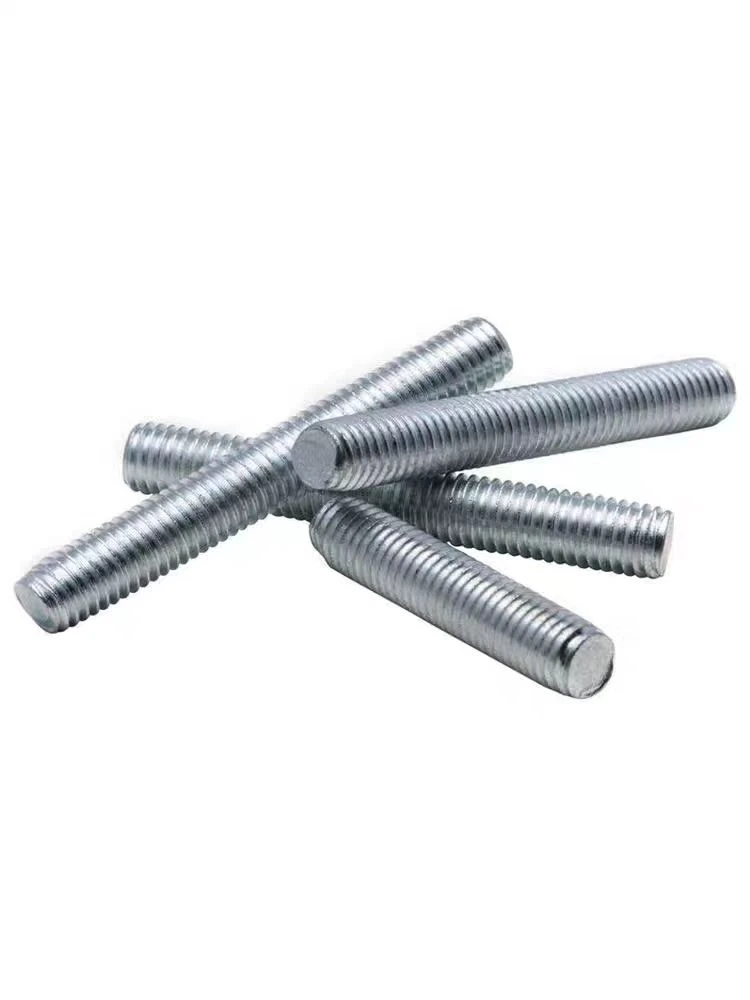

shear stud bolt
12월 . 07, 2024 02:48 Back to list
shear stud bolt
Understanding Shear Stud Bolts An Essential Component in Structural Engineering
In the realms of structural engineering and construction, the importance of specialized fasteners cannot be overstated. Among these, shear stud bolts play a critical role in ensuring the safety and integrity of various structures. This article explores the definition, functionality, applications, and advantages of shear stud bolts, highlighting their significance in modern engineering practices.
What are Shear Stud Bolts?
Shear stud bolts are special fasteners designed to transfer shear forces between two structural elements. Unlike conventional bolts that primarily withstand tension forces, shear studs are optimized to resist sliding or shearing actions. This characteristic makes them particularly valuable in applications where different materials must remain securely attached without the risk of movement.
Shear studs typically consist of a cylindrical shaft with a head on one end, and they are usually constructed from high-strength steel to bear substantial loads. The length and diameter can vary depending on the specific requirements of a project.
Functionality and Mechanism
The primary function of shear stud bolts is to provide resistance against shear forces that can occur due to various factors, including wind loads, seismic activity, and the weight of the materials being supported. When shear forces act on a structure, the bolts engage with the connected elements, effectively distributing these forces and preventing catastrophic failure.
Moreover, shear stud bolts are often used in conjunction with other fastening methods, such as welding or additional mechanical fasteners, to enhance the overall strength of the joint
. The combination of these techniques creates a robust assembly capable of withstanding extreme conditions.Applications of Shear Stud Bolts
Shear stud bolts are prevalent in multiple sectors of construction and engineering. Some of their most common applications include
1. Bridge Construction Shear stud bolts are widely used in bridge engineering to connect deck slabs to girders, ensuring stability and resistance against lateral forces that may arise from vehicle movement and environmental factors.
shear stud bolt

2. Steel Framed Buildings In commercial and industrial buildings, shear studs are critical for attaching various components, such as shear walls and bracing elements, which help maintain the structure's integrity during high winds or seismic events.
3. Composite Construction In composite structures, shear stud bolts connect steel beams to concrete slabs, enabling composite action that combines the strengths of both materials, resulting in enhanced load-bearing capacity and stiffness.
4. Heavy Machinery and Equipment Anchor Shear stud bolts are also used to secure heavy machinery and equipment to foundations, preventing displacement during operation.
Advantages of Using Shear Stud Bolts
The utilization of shear stud bolts offers several advantages
- High Strength Made from durable materials, these bolts can withstand significant shear forces, ensuring long-lasting performance.
- Versatility Shear stud bolts can be customized according to project requirements, making them adaptable for various applications in different industries.
- Ease of Installation The installation process for shear studs is relatively straightforward, which can lead to time and cost savings during construction.
- Enhanced Safety By effectively transferring shear loads, these bolts significantly reduce the risk of structural failure, thereby improving overall safety.
Conclusion
Shear stud bolts are indispensable elements in the world of structural engineering. Their unique design and functional capabilities make them essential for maintaining the safety, stability, and integrity of structures in a wide range of applications. As construction practices evolve and new materials are introduced, the role of shear studs will continue to be significant in achieving robust and resilient designs necessary for modern infrastructure.
Latest news
-
Hot Dip Galvanized Bolts-About LongZe|High Strength, Corrosion Resistance
NewsJul.30,2025
-
High-Strength Hot Dip Galvanized Bolts - Hebei Longze | Corrosion Resistance, Customization
NewsJul.30,2025
-
Hot Dip Galvanized Bolts-Hebei Longze|Corrosion Resistance&High Strength
NewsJul.30,2025
-
High-Strength Hot-Dip Galvanized Bolts-Hebei Longze|Corrosion Resistance&High Strength
NewsJul.30,2025
-
Hot Dip Galvanized Bolts-Hebei Longze|Corrosion Resistance&High Strength
NewsJul.30,2025
-
Hot Dip Galvanized Bolts - Hebei Longze | Corrosion Resistance, High Strength
NewsJul.30,2025

